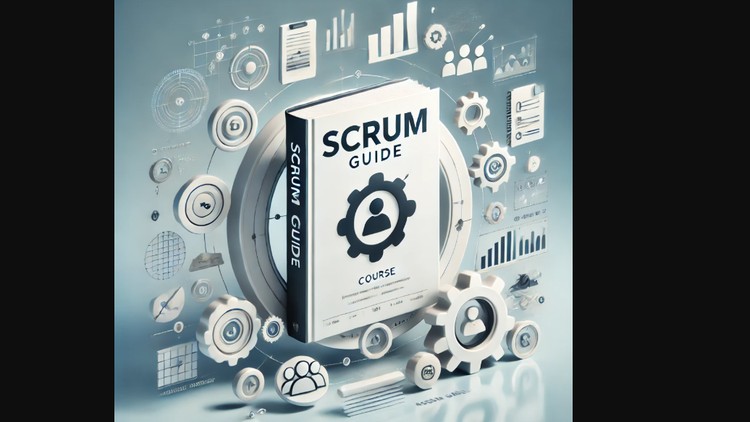
Scrum Guide
What you will learn
Understanding Scrum Framework
Scrum Team Roles and Responsibilities
Scrum Events
Scrum Artifacts
Why take this course?
Welcome to this course! Unlock the power of Agile project management with Scrum and take your skills to the next level.
The Scrum Guide, last updated in November 2020, remains an invaluable resource for those looking to learn and prepare for certifications.
Scrum is a lightweight yet powerful framework that enables individuals, teams, and organizations to create value through adaptive solutions for complex challenges. At its core, Scrum relies on the Scrum Master to cultivate an environment where:
- The Product Owner organizes tasks for a complex project into a prioritized Product Backlog.
- The Scrum Team transforms selected tasks into valuable increments during each Sprint.
- The Scrum Team and stakeholders review the outcomes and adapt plans for the next Sprint.
- This cycle repeats to continuously deliver value.
Scrum is built on the principles of empiricism and lean thinking. Empiricism emphasizes learning through experience and making decisions based on observation. Lean thinking focuses on minimizing waste and concentrating on what truly matters.
By employing an iterative and incremental approach, Scrum enhances predictability and manages risks effectively. It fosters collaboration among teams with diverse skills, enabling them to share or acquire knowledge as needed. The framework incorporates four key events for inspection and adaptation, all within the overarching Sprint, leveraging the three pillars of Scrum: transparency, inspection, and adaptation.
This course offers a practical, hands-on understanding of Scrum. By the end, you’ll gain the confidence and tools to lead Agile projects, collaborate seamlessly, and deliver solutions that delight customers. Whether you’re aiming to earn a certification or adopt Scrum practices in your organization, this course has everything you need!